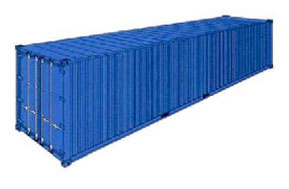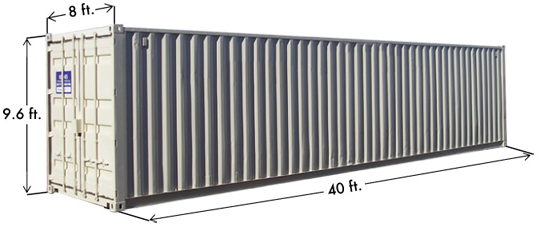| |
|
|
|
| UTILITY |
|
INCOTERMS 2010 |
Classification of the 11 Incoterms® 2010 rules
The 11 Incoterms® 2010 rules are presented in two distinct classes: |
RULES FOR ANY MODE OR MODES OF TRANSPORT :
EXW : EX WORKS
FCA : FREE CARRIER
CPT : CARRIAGE PAID TO
CIP : CARRIAGE AND INSURANCE PAID TO
DAT: DELIVERED AT TERMINAL
DAP : DELIVERED AT PLACE
DDP : DELIVERED DUTY PAID
RULES FOR SEA AND INLAND WATERWAY TRANSPORT :
FAS : FREE ALONGSIDE SHIP
FOB : FREE ON BOARD
CFR : COST AND FREIGHT
CIF : COST INSURANCE AND FREIGHT |
 |
|
Container Specifications
20' standard steel container
20' standard steel container are closed weather-tight containers that are suitable for any general cargo. 20' standard steel containers operated by shipping lines have a payload capacity of up to 28,160 kg, close to the payload capacity of most 40' standard steel containers. This makes 20' standard steel containers especially suitable for high-density, heavy weight cargo.
|
 |
|
Description |
Metric |
U.S. |
Cubic Capacity |
33.200 cubic meters |
1,170 cubic feet |
Payload (Weight) |
21,850 kg - 28,160 kg |
48,171 lb - 62,082 lb |
Tare Weight |
2,150 kg - 2,220 kg |
4,740 lb - 4,894 lb |
Max Gross Weight |
24,000 kg - 30,480 kg |
52,911 lb - 67,197 lb |
Internal Length |
5.898 m |
19'4" |
Internal Width |
2.352 m |
7'9" |
Internal Height |
2.392 m |
7'10" |
External Length |
6.058 m |
19'10 1/2" |
External Width |
2.438 m |
8'0" |
External Height |
2.591 m |
8'6" |
Door Opening Width |
2.340 m |
7'8" |
Door Opening Height |
2.280 m |
7'6" |
Lashing Rings |
Five on each top and bottom rails, capacity 2,000 kg;
Three on each corner post, capacity 1,500 kg |
|
|
40' Standard Steel Container |
|
40’ standard steel containers are closed weather-tight containers that can be used to transport any general cargo. Most of shipping 40’ containers have a payload capacity of 28,760 kg with a gross weight of 32,500 kg. This exceeds the payload capacity of 26,760 kg (gross weight of 30,480 kg) required by ISO standards. Almost all 40’ containers have a recess at the bottom called the gooseneck tunnel. |
 |
|
|
Description |
Metric |
U.S. |
Cubic Capacity |
67.700 cubic meters |
2,391 cubic feet |
Payload (Weight) |
26,760 kg - 28,760 kg |
58,996 lb - 63,405 lb |
Tare Weight |
3,720 kg - 3,740 kg |
8,201 lb - 8,245 lb |
Max Gross Weight |
30,480 kg - 32,500 kg |
67,197 lb - 71,650 lb |
Internal Length |
12.032 m |
39'6" |
Internal Width |
2.352 m |
7'9" |
Internal Height |
2.392 m |
7'10" |
External Length |
12.192 m |
40'0" |
External Width |
2.438 m |
8'0" |
External Height |
2.591 m |
8'6" |
Door Opening Width |
2.340 m |
7'8" |
Door Opening Height |
2.280 m |
7'6" |
Lashing Rings |
Ten on each top and bottom rails, capacity 2,000 k;
Three on each corner post, capacity 1,500 kg |
|
|
40' High Cube Steel Container |
|
40’ high cube containers are suitable for all general cargo transportation. They are almost identical to the 40’ standard containers, except that they have more cubic capacity as they are one foot taller. Thus, 40’ high cube containers are especially suitable for voluminous cargo. The ISO standard payload capacity is 26,760 kg with a gross weight of 30,480 kg
Most of shipping line’s 40’ high cube containers have a payload capacity of 28,550 kg with a gross weight of 32,500 kg, which surpasses the ISO requirement. Almost all 40’ containers have a recess at the bottom called the gooseneck tunnel. |
 |
|
Description |
Metric |
U.S. |
Cubic Capacity |
76.400 cubic meters |
2,700 cubic feet |
Payload (Weight) |
26,750 kg - 28,550 kg |
58,974 lb - 62,942 lb |
Tare Weight |
3,730 kg - 3,950 kg |
8,223 lb - 8,708 lb |
Max Gross Weight |
30,480 kg - 32,500 kg |
67,197 lb - 71,650 lb |
Internal Length |
12.033 m |
39'6" |
Internal Width |
2.352 m |
7'9" |
Internal Height |
2.698 m |
8'10" |
External Length |
12.192 m |
40'0" |
External Width |
2.438 m |
8'0" |
External Height |
2.896 m |
9'6" |
Door Opening Width |
2.340 m |
7'8" |
Door Opening Height |
2.585 m |
8'6" |
Lashing Rings |
Ten on each top and bottom rails, capacity 2,000 kg;
Three on each corner post, capacity 1,500 kg |
|
|
Packing Specifications
Packaging has frequently been described in the past, and to some extent still is described, as "ordinary commercial" or "seaworthy". However, since these terms are rather vague and provide no precise definition of such packaging, they should be avoided. Even poor packaging may be described as "ordinary commercial".
Ordinary commercial packaging merely refers to certain practices which are customary in the consignor's country. The conditions which the product will be expected to withstand during transport, which are determined by the route, duration of transport, destination, duration of storage, possible onward transport, must be taken into account.
Using the term seaworthy packaging is intended to indicate that the packaging must additionally withstand the conditions of maritime transport and thus more severe stresses. However, this often disregards the fact that the most severe stresses do not occur during maritime transport itself, but instead during cargo handling (due to impact, pushing, overturning etc.).
When problems arise, the terms "ordinary commercial" and "seaworthy" packaging always cause dispute because they are not defined. It is thus advisable to stipulate the exact nature of the packaging when making contractual agreements. This may be achieved by specifying the following parameters:
Packaging material
Packaging container
Packaging aid
Mandatory standards and legislation
Package design
Strength requirements |
|
Volume Conversion
|
|

